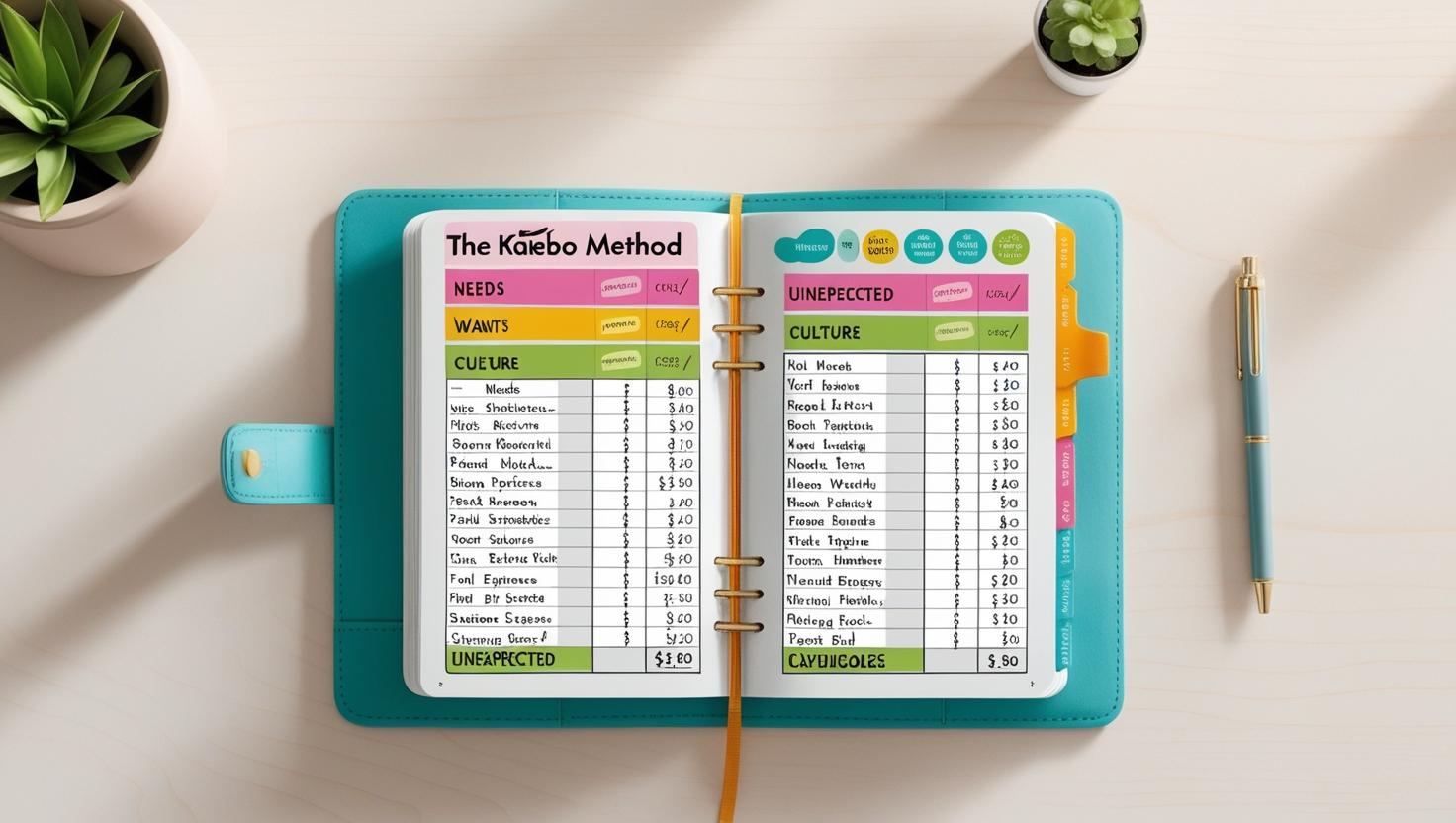Saving money can be challenging, especially with daily temptations and unexpected expenses. If you struggle with financial discipline, the Kakebo method—a Japanese budgeting technique—can help you take control of your spending and improve your savings.
This guide will explain what Kakebo is, how it works, and how you can apply it to your daily life to build better financial habits.
1. What Is the Kakebo Method?
Kakebo (pronounced kah-keh-bo) means “household financial ledger” in Japanese. It’s a simple yet powerful budgeting system that focuses on mindful spending and saving.
Unlike modern budgeting apps, Kakebo is traditionally done on paper, encouraging users to manually track their finances. This process makes people more conscious of their spending habits and financial goals.
Origins: The method was developed in 1904 by Japanese journalist Hani Motoko to help families manage their household budgets.
2. How the Kakebo Method Works
Kakebo follows a straightforward four-step process every month:
Step 1: Write Down Your Monthly Income
At the start of each month, list all your sources of income, including:
✅ Salary
✅ Side jobs
✅ Passive income (investments, rental properties, etc.)
This gives you a clear picture of how much money you have available.
Step 2: List Your Fixed and Variable Expenses
Divide your expenses into two categories:
1️⃣ Fixed Expenses – Recurring costs that don’t change much, such as:
- Rent/mortgage
- Utility bills
- Loan payments
- Internet and phone bills
2️⃣ Variable Expenses – Costs that fluctuate, such as:
- Groceries
- Transportation
- Entertainment
- Dining out
- Shopping
By separating fixed and variable costs, you can identify areas where you might cut back.
Step 3: Categorize Your Spending
Kakebo organizes expenses into four categories to help track where your money goes:
1. Essentials – Basic needs like food, rent, and transportation.
2. Culture & Leisure – Books, movies, concerts, hobbies, subscriptions.
3. Extra/Unexpected Expenses – Emergency costs, car repairs, medical bills.
4. Optional/Indulgences – Eating out, shopping, luxury items.
The goal: Reduce spending in non-essential categories and increase your savings!
Step 4: Set a Monthly Savings Goal
Now that you know your income and expenses, set a realistic savings goal. Ask yourself:
“How much can I realistically save this month?”
“What unnecessary expenses can I reduce?”
At the end of the month, review your results and adjust for the next cycle.
3. Benefits of Using the Kakebo Method
✅ Increases Awareness – Writing things down makes you more conscious of your spending.
✅ Encourages Mindful Spending – You think twice before making impulse purchases.
✅ Reduces Financial Stress – Helps you feel more in control of your money.
✅ Simple and Effective – No need for complex financial tools or apps.
4. Tips to Make Kakebo More Effective
Be Honest – Record every expense, no matter how small.
Review Weekly – Check your spending habits to stay on track.
Use a Notebook or App – While traditional Kakebo is done on paper, digital versions exist.
Celebrate Progress – Reward yourself when you reach savings milestones.
5. Who Should Use the Kakebo Method?
✔️ People who prefer pen-and-paper budgeting.
✔️ Those who struggle with impulse spending.
✔️ Anyone who wants a structured savings plan.
✔️ Individuals looking for a simpler alternative to digital apps.
Final Thoughts
The Kakebo method is a practical and mindful approach to managing money. By tracking your income, categorizing expenses, and setting savings goals, you can take control of your finances and build better money habits.
Start your Kakebo journey today and watch your savings grow!

